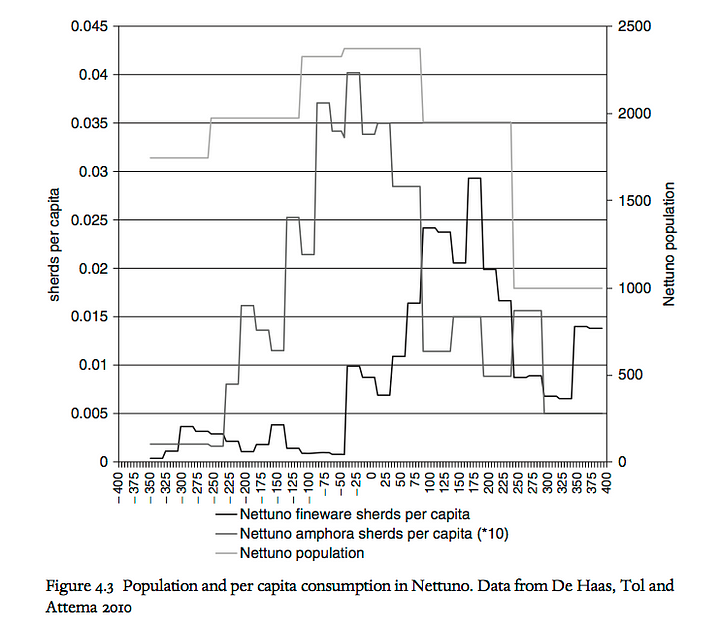From Reaction Magazine:
This question – could Rome have had an industrial revolution? – is prompted by
Kingdom of the Wicked, a
new book by Helen Dale. Dale forces us to consider Jesus as a religious
extremist in a Roman world not unlike our own. The novel throws new
light on our own attitudes to terrorism, globalization, torture, and the
clash of cultures. It is highly recommended.
Indirectly, however,
Dale also addresses the possibility of sustained economic growth in the
ancient world. The novel is set in a 1st century Roman empire during the
governorship of Pontus Pilate and the reign of Tiberius. But in this
alternative history, the Mediterranean world has experienced a series of
technical innovations following the survival of Archimedes at the siege
of Syracuse, which have led to rapid economic growth. As Dale explains
in the book’s excellent afterword (published separately
here),
if Rome had experienced an industrial revolution, it would likely have
differed from the actual one; and she briefly plots a path to Roman
industrialization. All of this is highly stimulating and has prompted me
to speculate further about whether Rome could have experienced modern
economic growth and if Dale’s proposed path towards a Roman Industrial
Revolution is plausible.
Roman Economic Prosperity
For decades, historians
were deeply skeptical of the potential of the ancient world to generate
sustained economic growth. Influenced by Moses Finlay and Karl Polanyi,
historians saw the ancient and modern worlds as separated by a cultural
and economic chasm. Prior to the Industrial Revolution-era leaping of
this chasm, individuals supposedly lacked “economic rationality,” did
not seek opportunities to maximize profit, and were disinclined to use
new technology for economic purposes.
This view is no longer credible. In his recent book,
The Fate of Rome,
Kyle Harper depicts
a Roman economy which supported both population growth and rising per
capita incomes. It was an economy in which inequality was high— the rich
were super rich — but even the middling classes or urban poor had
access to a wide range of premodern “consumer goods”. Moreover,
according to Harper, this was based on market-orientated Smithian
growth:
“Peace,
law, and transportation infrastructure fostered the capillary
penetration of markets everywhere. The clearing of piracy from the
Mediterranean in the late Republic may have been the single most
critical precondition for the burst of commercial expansion that the
Romans witnessed; risk of harm has often been the costliest impediment
to seaborne exchange. The umbrella of Roman law further reduced
transaction costs. The dependable enforcement of property rights and a
shared currency regime encouraged entrepreneurs and merchants . . .
Roman banks and networks of commercial credit offered levels of
financial intermediation not attained again until the most progressive
corners of the seventeenth-eighteenth century global economy. Credit is
the lubricant of commerce, and in the Roman empire the gears of trade
whirred” (Harper, 2017, p 37).
This assessment
is bold but consistent with the recent findings of archaeologists who
continue to uncover evidence of dense trading networks and widespread
ownership of industrially produced consumption goods across the empire.
Willem Jongman’s chapter in the recent
Cambridge History of Capitalism summarizes many of these new findings:
“crucial
performance indicators show dramatic aggregate and per capita increases
in production and consumption from the 3rd century BCE, or sometimes a
bit later, until the Roman economy reached a spectacular peak during the
1st century BCE and the 1st century CE, lasting until perhaps the
middle of the 2nd century CE” (Jongman, 2015, 81).
Jongman’s
chapter provides evidence of intensified coal production, pollution,
building construction, and animal consumption. I’ve reproduced one of
his figures. It depicts the rapid increase in pottery shards from
Netturo (approximately 50 km south of Rome) in these centuries.

But at
even the Roman empire at its peak in the reign of Marcus Aurelius does
not appear to have been on the verge of modern economic growth. Rome
lacked some of the crucial characteristics of Britain on the eve of the
Industrial Revolution. There was no culture of invention and discovery,
no large population of skilled tinkerers or machine builders, and no
evidence of labor scarcity that might have driven the invention of
labor-saving inventions.
The Roman Counter-Factual
Before concluding that a
Roman Industrial Revolution was impossible, however, perhaps some
caution is required. In many respects the British Industrial Revolution
was overdetermined. Nick Crafts made this point eloquently almost 40
years ago in his
comparison of Britain and France:
“there
are no “covering laws” which explain England’s primacy; the best we can
do is to formulate explanatory generalizations with an error term.
Given that the “event” is unique, the tools of statistical inference are
inadequate to explain the timing of decisive innovations . . .
Furthermore, if the Industrial Revolution is thought of as the result of
a stochastic process, the question, “Why was England first?” is
misconceived: the observed result need not imply the superiority of
antecedent conditions in England” (Crafts, 1978).
Craft’s point
is that the timing of Industrial Revolution was partly random and, in
the absence of repeated experiments, we will never have precise causal
estimates of the impact of any single factor that distinguished 18th
century England, from France, Qing China, or indeed ancient Rome. All
that we can say is that the balance of probabilities was such so as to
make an economic breakthrough much more likely in 18th century Europe
than in China or the ancient world....
MUCH MORE
